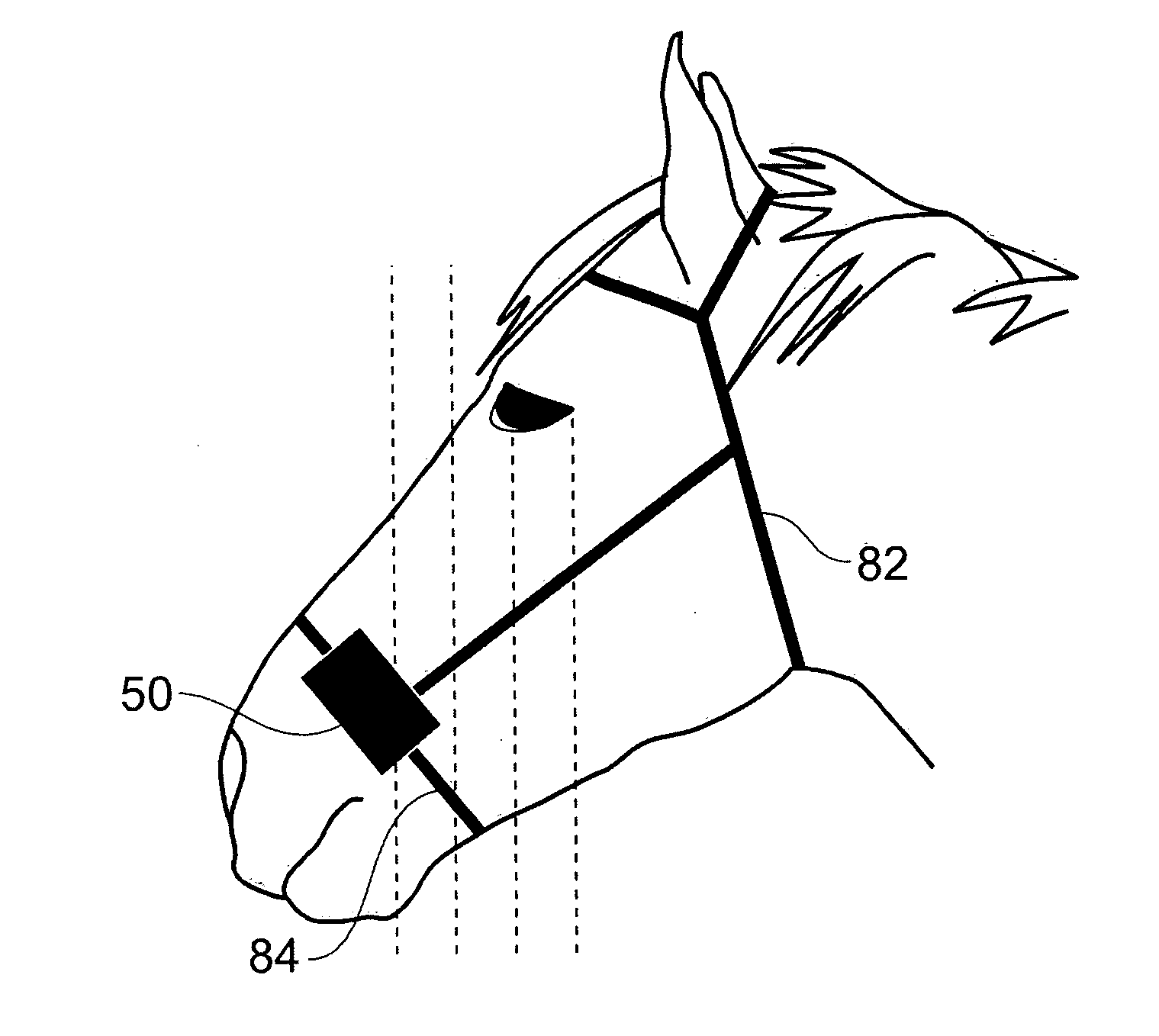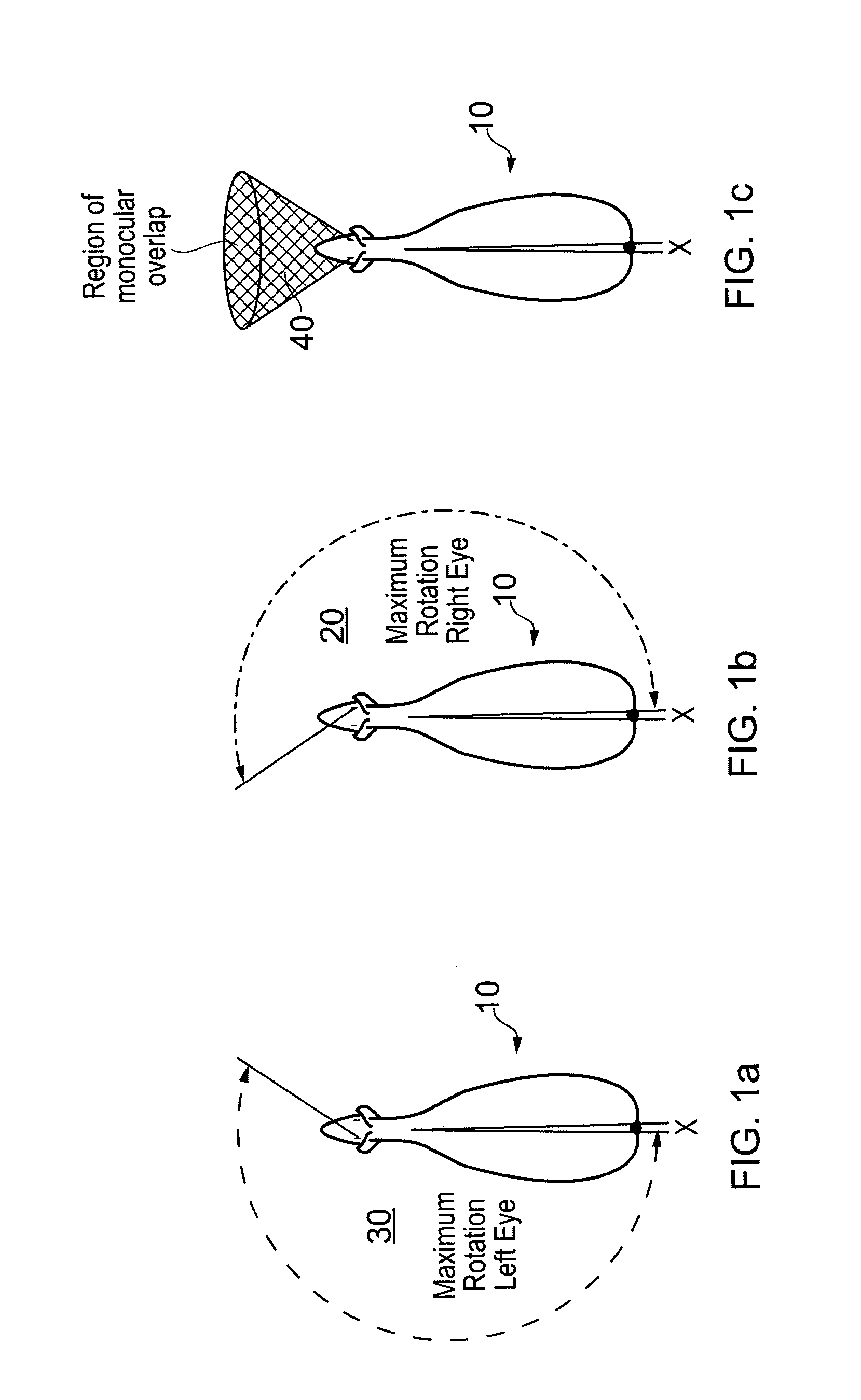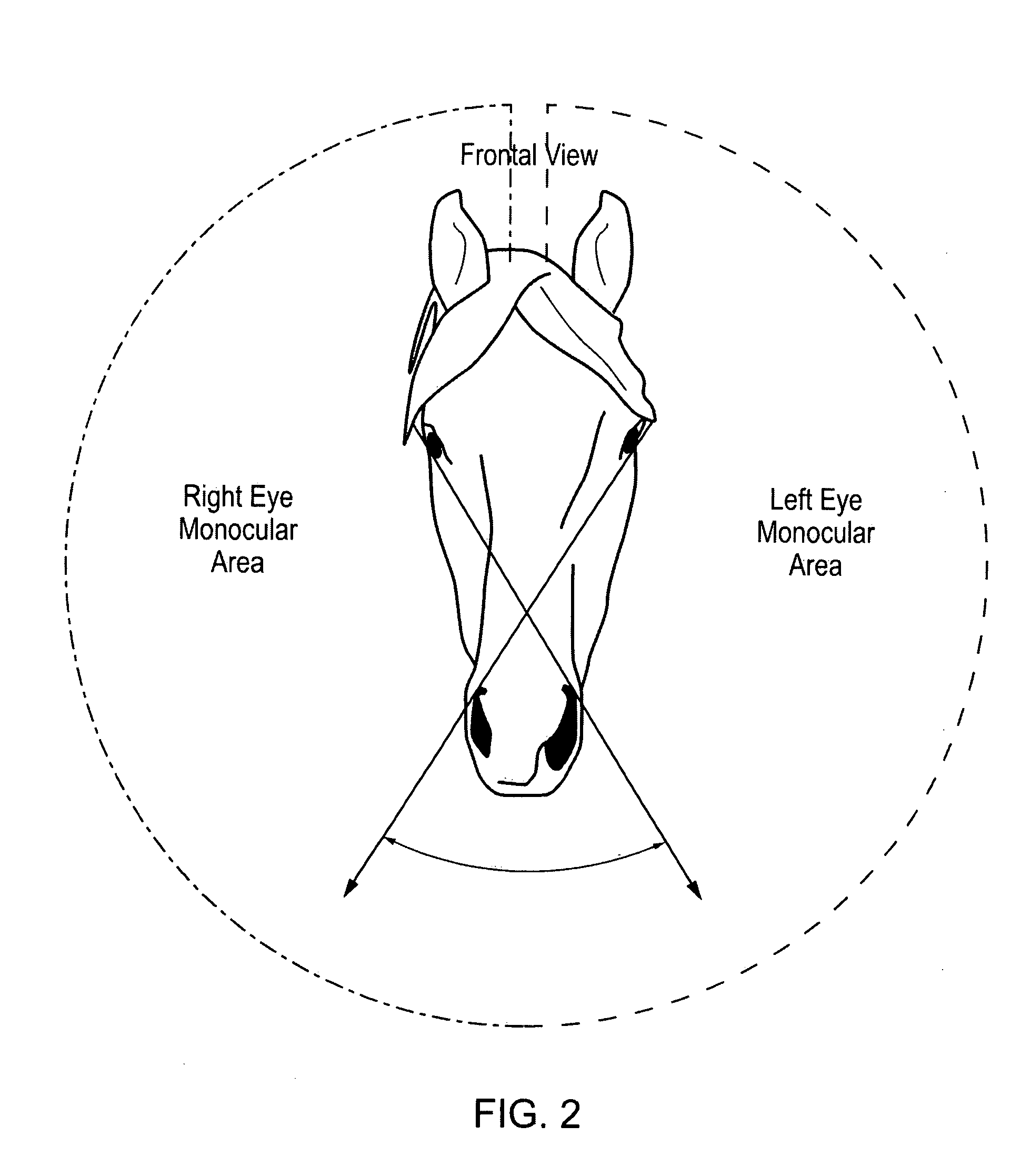[0022]It is appreciated therefore that use of the visual aid creates an area in front of the horse's eyes, which encourages the horse to look “through” two post-like forms and focus beyond the visual aid. The visual aid therefore defines an area in the visual
field of view of the horse, which effectively acts as a “funnel” for the horse to look through. The invention is therefore different from the aforementioned blinkers and eye shields and, rather than provide a
distraction to the horse, which was the case previously with sheepskin nosebands, it provides a virtual frame into which the horse's focus is drawn naturally with minimum visual stress. This is because, unlike a
solid band positioned across the
nose that poses an obstruction and creates a continuous ocular
distraction, the visual aid defines two independent, relatively narrow, first and second lateral portions that define left and right edges of a frame through which the horse can see a complete
field of view.
[0023]In use the lateral regions of the field of view change as the horse gallops ‘into’ the space defined between the two lateral portions. This has been found to be more effective for the horse and less strenuous on its neck and
eye muscles because rather than the horse having to force its head into an unnatural angle in order to see a
full field of view (so as to be able to see over a noseband) it is able to hold its head higher in a more natural posture and so avoid detracting from its natural posture and
gait.
[0024]Optionally the visual aid is produced in the form of a buffer or roll made of sheepskin or some other material and defines a simple, low profile contoured shape across the
muzzle of the horse, presenting finger-like projections at the right and left side of the horse's head. By hugging the horse's facial features a shadow or shadow area is formed in the frontal sphere of vision of each eye of the animal by the lateral projections. This causes the horse naturally to move its eyes towards a more central space, defined by the edges of a frame between the first and second lateral portions of the visual aid. It is apparent that this is the optimum area for
visual interpretation and is achieved effectively by creating a simple
fixation point, for close or distant objects, the near and far focussing being achieved by the combination of movement of the eyeball and muscles within the eye. By way of analogy a human sprinter is often taught to visualise an end point in a race beyond the
finish line, thereby improving visual focus and concentration when such a forward
fixation point has been identified and established.
[0029]The visual aid is preferably attachable to an existing bridle by hook-and-eye such as Velcro (Registered Trade Mark) fastening means or by means such as hook and loop tape or by slits
cut within the rear backing that are for example adapted to
wrap around a bridle. These fastening means, tapes or backing allow for a noseband, which is sometimes part of the bridle, to slide easily through openings formed on a support (strap) for the visual aid. This ensures that lateral portions remain attached to the correct region of the bridle, thereby ensuring the important vertical positioning of the visual aid. This is also desirable as it ensures that the lateral portions do not slide up or down the horse's bridge and so alter its field of view in normal usage. In some horses, there may be a need to raise the buffer so that the top of each buffer sits more prominently on one or both sides of the horse's bridge.
[0031]Maintenance of the vertical positioning is important for the visual aid to work effectively. Physical contours of the visual aid may differ according to the type of material used and also according to the
visual task. As horses have restricted
colour vision, certain colours and dyes for the fabric materials, may be added to emphasise edges of the lateral portions from the horses viewpoint. A darker colour may produce a more obvious edge to the visual aid and so encourage the horse's eyes to fixate, and therefore converge more easily or readily. Colours or regions of different colour or shade or pattern may be used individually or in combination on any single buffer unit.
[0032]It is apparent that the visual aid has many advantages over existing sheepskin nosebands and other commercial items that are currently used with the claim of helping the horse to focus or concentrate and it is understood that the visual aid allows for natural, unobstructed rear and forward vision.
 Login to View More
Login to View More  Login to View More
Login to View More 


